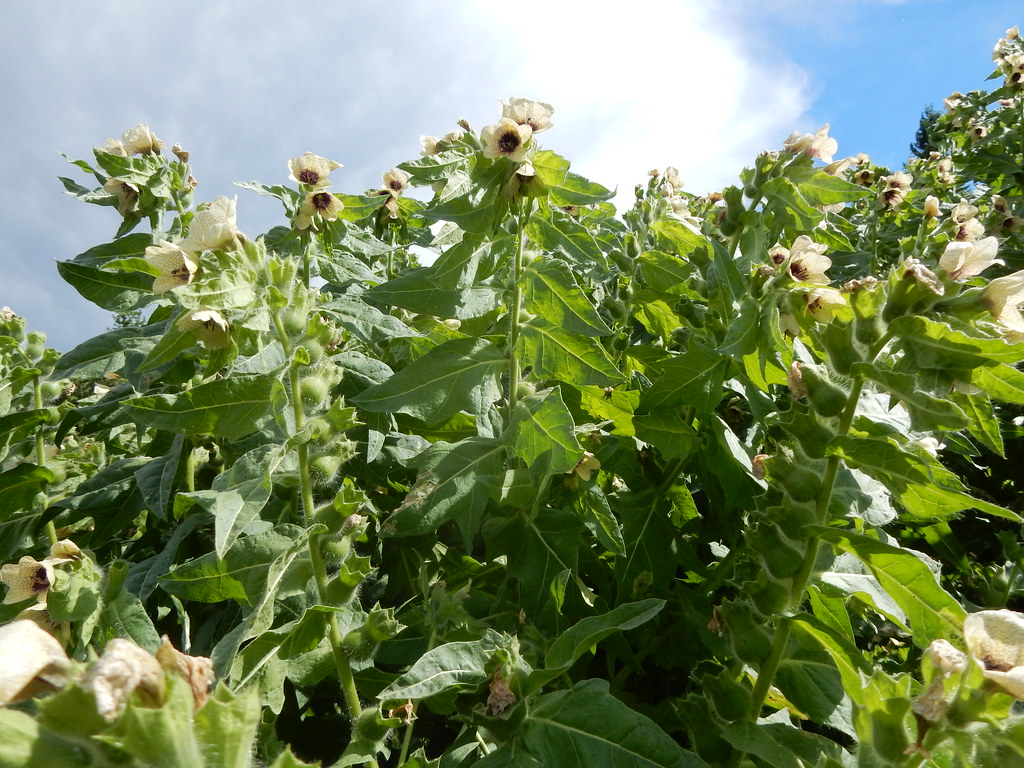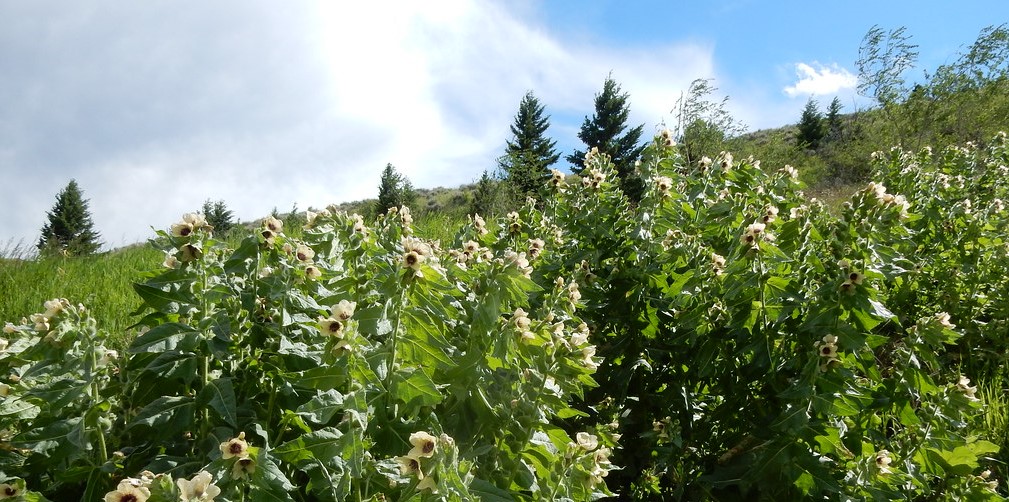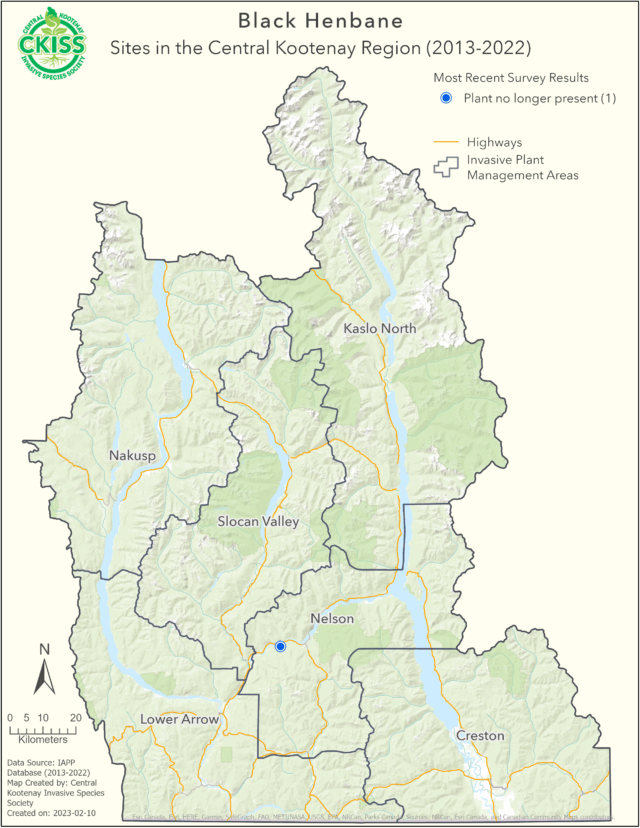Hyoscyamus niger
Caution: All parts of this plant are poisonous.
Identification
- Flowers are yellow-green with purple veins and centers, approximately two inches in diameter
- Base of flowers is urn-shaped
- Flowers and leaves have a strong smell, therefore this plant is sometimes called “stinking nightshade.”
- Stems, leaves, and bases of flowers are hairy
- Leaves are alternately arranged on the stem, up to eight inches long, lance-shaped, and have shallow lobes
- Grows in well-drained soils in full sun
- Stems are thick and sturdy
- Plants grow up to three feet tall
Introduction and spread
- Native to Europe.
- Historically used in herbal medicine (although it is very poisonous), so it may have been brought to North America for this purpose as well as for ornamental use in gardens.
- It is now present across the United States, and has limited distribution in Canada.
Consequences of invasion
- This plant is toxic to both humans and animals.
- This species is not an aggressive competitor, so it does not commonly invade areas with well-established, healthy vegetation.
- However, disturbed areas and agricultural areas are vulnerable to infestation with this plant.
- Once established, this plant can be difficult to eradicate.
- The tall, dense growth of this plant, and large volumes of leaf litter that it generates, can create shade which prevents native plants from germinating and growing.
- While livestock will generally avoid this plant on rangeland, if it contaminates dried hay it can poison livestock.
Status in the CKISS region
- Black henbane is currently classified as Eradicate on the CKISS Annual Priority List.
- This species is also classified as Provincial EDRR by the provincial government, and is managed by the Province. Please report any sightings immediately to the Province.
- Black henbane was first confirmed in the CKISS region (i.e., the Nelson Invasive Plant Management Area) in 2021.
- To learn more about how CKISS classifies and manages invasive species, see our Invasive Species Priority Lists page.
Integrated pest management options
Prevention
- Maintaining healthy vegetation can prevent this plant from invading.
- Do not purchase or share this plant for ornamental use. Use one of the many other PlantWise options instead.
Mechanical treatment
- This plant can be mowed or cut before flowering, although it does have a thick, tough stem.
- Small infestations can be pulled by hand. Use personal protective equipment to minimize skin exposure.
- Take care not to spread the seeds of this plant (best to treat before it has produced seed), and be sure to securely dispose of all plant parts.
All landfills within the RDCK and RDKB accept invasive plant species for free. Ensure your material is bagged in clear plastic bags and notify the attendant that you have invasive plant species. Plants must be identifiable through the bag. For more information please see the RDCK Resource Recovery Bylaw.
Additional resources







